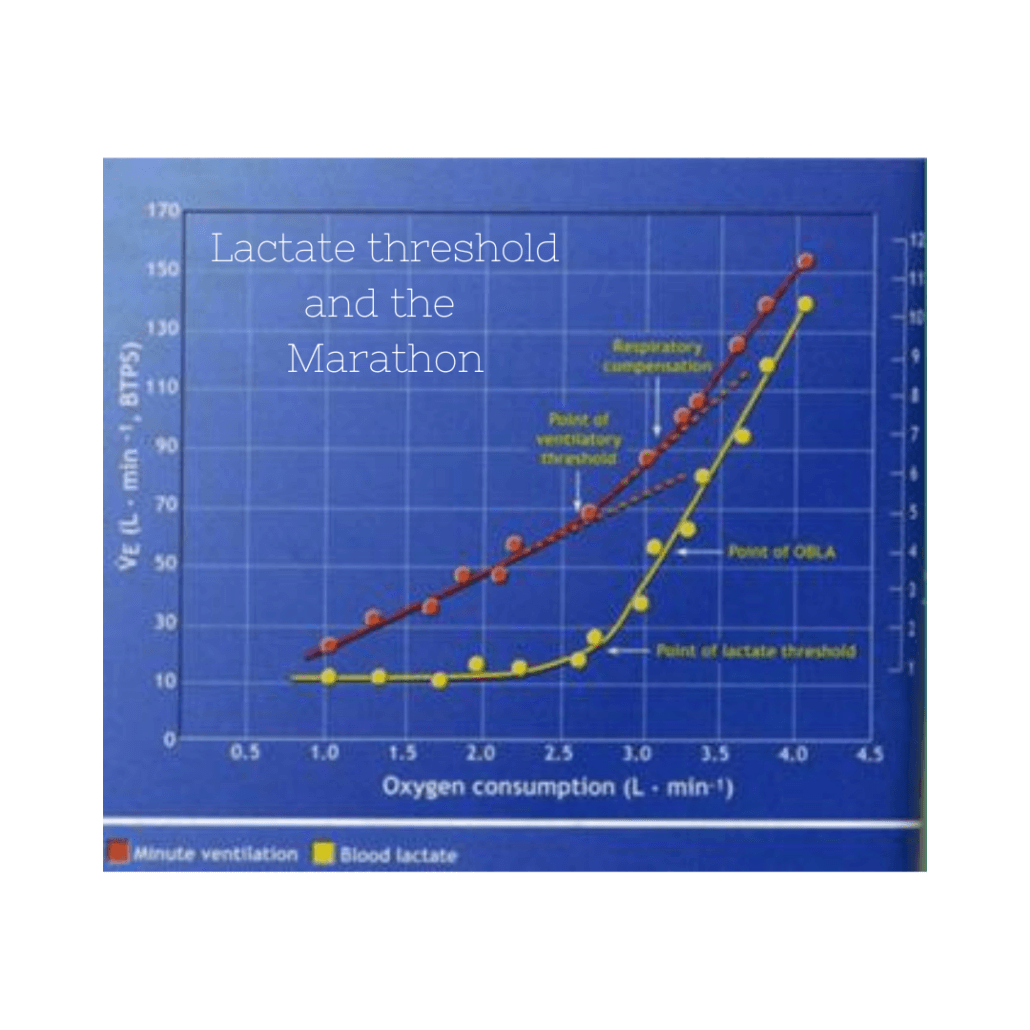Threshold Volume

Podcast: Play in new window | Download
As a coach or an athlete, we look for guides as to how much work is an appropriate amount for a given athlete. I have mentioned this before, but again, often we discuss the 80/20 rule in training- 80% of our work should be easy and 20% hard. The question then becomes what is hard and what is easy, and in terms of hard, how should that look? So, I’d like to break down some general guidelines. In terms of the 20%, for most of my athletes, that’s going to be anything faster than half marathon pace. However, when talking about true definitions of hard, researchers will argue that 20% is anything harder than the lactate threshold, or the pace that you can hold for about an hour. Race pace, that’s anything from 10k pace to just under 20k race pace for my fastest athletes.
Right now, let’s look at threshold work. Now to be clear as mud, the term threshold has a lot of names. The most current is LT2, which stands for 2nd lactate threshold. In practical matters, it’s the point where blood lactate starts to accumulate exponentially. You have probably also heard the terms anaerobic threshold, lactate threshold, the onset of blood lactate accumulation, or maximal lactate steady state. These are the same thing.
Ok, got it? Good! Now, what you want to know- how much can I include in my weekly volume? Well, the rule of thumb appears to be that I can include about 10% of my weekly mileage in the form of threshold work.
Now, I must caveat this with the point that, when reading this, don’t think that every week should include 10% threshold work. No, we are just saying that when including threshold work, these should be your guidelines.
What kind of workouts should I be doing?
At the basis of theory, you have two options. The first is the traditional tempo. The second would be repeated at your LT. Is either of them better than the other? I wouldn’t say that, as both have a place in training and they both have different features. So, any type of runner would benefit from incorporating both.
Tempos:
Most coaches agree that a 20-minute tempo at LT is the staple of building stamina in the endurance runner. Now, coaches will extend those out based on ability. For example, coach Joe Vigil talks about extending these out to 6-8+ miles for his elite runners. On the other hand, Jack Daniel’s talks about doing longer tempo runs, but slowing the pace down, the further you go so that by the time you get to about 60 minutes, the pace is much closer to the marathon pace than the original threshold pace.
As a lower mileage runner, a 20-30 minute tempo run might essentially be your 2-3 miles allotted for a threshold allowance for the week. It might also be a pretty tough run. If you are a higher mileage runner a 20-minute tempo might be 4 miles, but you are under that 10% allotment. We then have an issue- do we get that extra few miles in another workout, make the current workout longer, or just let it go? That’s where LT repeats can come in for both groups.
LT repeats would be like any other repeat you did for speed, just a little slower (maybe) and less recovery. You might end up with a little overall volume. Overall, we are looking at repeats that are maybe 3+ minutes in length with a pretty short recovery. For most athletes repeats of 800’s to km’s are the Goldilocks distance.
6-10 x 800
5-10 x 1k
4-8 x 1200
These would all be staple workouts.
like the repeat for a few different avenues. One, when just building up. These make a lot of sense for all groups. Whether you are just starting as a beginner or just the beginning of a segment. It allows athletes to accumulate more time and volume without quite as much stress. It also opens the door to getting creative with some combination workouts (speed and LT or LT and half marathon pace). If LT is hard for you then going the repeat route allows a little faster recovery to allow for a second quality session along with a long run if placed right. Whereas a tempo might need to negate that second workout for the same runner. There are quite a few plays with this.
Now, don’t take this as me saying I don’t like tempos. I certainly do. In fact at higher mileage, when running a half marathon, not only would a person do a tempo of 10-20 minutes, but they could do something that would represent multiple tempos on the same workout. I think using a tempo or a race that will put you in that 20-30 minute range every 4-6 weeks during the appropriate segment makes a lot of sense as a checkpoint in development.
I mentioned it earlier, but what about doing half-marathon pace work? How would that work? Well, let’s look at it this way. Say you are a 60-minute 10k runner (about 9:40/mile), that would put an equal ability half marathon time at about 2:13. The faster you get, the closer half marathon pace is to the true LT pace, while the slower you are, the further away you get from what your lactate threshold pace would be. Regardless, the half marathon pace is significantly slower than LT, so I don’t necessarily adhere to that 10% guideline as much. Depending on the person, and how fast they are, I might keep their LT work to repeats, but as a second workout of the week, add an appropriate distance half marathon pace “tempo” run, that is, easier to manage. Secondly, it is a race-specific pace that I would want a person to be dialed into by the time the race came around. How much that is, to me it really depends on the person and how well I see them tolerating what I am giving them.
| Runner Level | LT Work | Half Marathon Work |
| Beginner | 400-1k repeats | 800-mile repeats/ build to 2-4 miles @ goal pace runs |
| Intermediate | 600-1200 repeats | 1-2 mile repeats/3-6 miles @ pace |
| Advanced runner | 800-1 mile (maybe 2-3k) | 1-3 mile repeats/3-7 miles @ goal pace |
That should give you a start on the topic of threshold training. If you want to dive a little deeper, you can check out the articles below.




